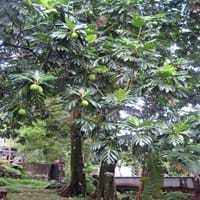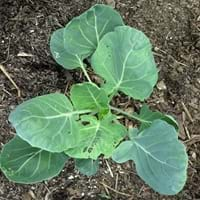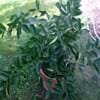Life Span
Perennial
Biennial
Origin
Southeastern Asia, Melanesia, Micronesia
Southern Europe, Western Europe, Mediterranean
Types
Jackfruit, Breadnut, Figs
Wild cabbage, Cabbage, Savoy cabbage
Number of Varieties
Not Available
Habitat
Lowland evergreen rainforest, Riverine swamp forest
Fertile bottom land, Moist Soils, Well Drained
USDA Hardiness Zone
10-15
4-8
Sunset Zone
H2
A1, A2, A3, H1, H2, 1a, 1b, 2a, 2b, 3a, 3b, 4, 5, 6, 7, 8, 9, 10, 11, 12, 13, 14, 15, 16, 17, 18, 19, 20, 21, 22, 23, 24
Habit
Oval or Rounded
Upright/Erect
Flower Color
Yellow green
Yellow
Flower Color Modifier
Bicolor
Bicolor
Fruit Color
Yellow, Green, Yellow green, Brown
Not Available
Leaf Color in Spring
Dark Green
Not Available
Leaf Color in Summer
Dark Green
Green
Leaf Color in Fall
Dark Green
Green
Leaf Color in Winter
Light Green
Green
Leaf Shape
Irregular
Broad, Unlobed
Plant Season
Spring, Summer, Fall, Winter
Spring, Summer, Fall, Winter
Sunlight
Full Sun, Partial Sun
Full Sun, Partial Sun
Type of Soil
Loam, Sand
Loam, Sand
The pH of Soil
Acidic, Neutral, Alkaline
Neutral
Soil Drainage
Average
Well drained
Bloom Time
Indeterminate
Late Spring, Early Summer, Summer
Tolerances
Drought
Drought
Where to Plant?
Ground
Container, Ground
How to Plant?
Grafting, Rooted stem cutting, Seedlings
Seedlings, Transplanting
Plant Maintenance
Medium
Medium
Watering Requirements
Average Water Needs, Never Over-water, occasional watering once established, Water daily during growing season, Water Deeply
Average Water Needs, Keep ground moist, Needs a lot of water initially, Needs watering once a week, Never Over-water
In Summer
Lots of watering
Lots of watering
In Spring
Moderate
Moderate
In Winter
Average Water
Average Water
Soil pH
Acidic, Neutral, Alkaline
Neutral
Soil Type
Loam, Sand
Loam, Sand
Soil Drainage Capacity
Average
Well drained
Sun Exposure
Full Sun, Partial Sun
Full Sun, Partial Sun
Pruning
Prune every year, Prune if you want to improve plant shape, Remove branches, Remove damaged leaves, Remove dead branches, Remove dead leaves, Remove dead or diseased plant parts
Prune lower leaves, Remove damaged leaves, Remove dead branches, Remove dead leaves
Fertilizers
20-20-20 amount, All-Purpose Liquid Fertilizer
5-10-10 fertilizer, All-Purpose Liquid Fertilizer, Apply 10-10-10 amount
Pests and Diseases
Red blotch
Red blotch
Plant Tolerance
Drought
Drought
Flower Petal Number
Not Available
Single
Fragrant Bark/Stem
No
Yes
Foliage Texture
Coarse
Bold
Foliage Sheen
Glossy
Matte
Attracts
Birds, Not Available
Insects
Allergy
allergic reaction
allergic reaction, breathing problems, Dizziness, Headache, Itchiness, Low blood pressure, Runny nose, Skin rash, Stomach pain, Swelling
Aesthetic Uses
Not Used For Aesthetic Purpose
Not Used For Aesthetic Purpose
Beauty Benefits
Good for skin, Promotes Healthy Hair, Removes dandruff, Speed hair growth
Good for skin
Environmental Uses
Air purification, Nesting sites for birds, Shadow Tree, Wildlife
Air purification
Medicinal Uses
Cancer, cholesterol-lowering, Heart problems, High cholestrol, Immunity, Skin Disorders, Weight loss
anti-inflammatory, Anti-oxidant, Cardiovascular problems, cholesterol-lowering, Detoxification, Fiber, Minerals, Nutrients, Vitamin C
Part of Plant Used
Fruits
Fruits
Other Uses
Used As Food, Used for its medicinal properties
Not Available
Used As Indoor Plant
No
Insignificant
Used As Outdoor Plant
Yes
Yes
Garden Design
Edible, Feature Plant, Fruit / Fruit Tree, Shade Trees, Tropical
Edible, Herb / Vegetable
Botanical Name
ARTOCARPUS altilis
BRASSICA oleracea 'Diablo'( Gemmifera Group)
Common Name
Breadfruit
Brussels Sprouts
In Hindi
Breadfruit Tree
Brussels Sprouts plant
In German
Brotfruchtbaum
Rosenkohl Pflanze
In French
Breadfruit Arbre
Choux de Bruxelles plante
In Spanish
árbol del pan
planta de coles de Bruselas
In Greek
αρτόδεντρο Δέντρο
φυτό Λαχανάκια Βρυξελλών
In Portuguese
Árvore de fruta-pão
Couves de Bruxelas planta
In Polish
Breadfruit drzewo
Brukselka roślin
In Latin
Arum
Bruxellis pullulat herba
Phylum
Magnoliophyta
Magnoliophyta
Class
Magnoliopsida
Magnoliopsida
Order
Urticales
Capparales
Family
Moraceae
Brassicaceae
Genus
Artocarpus
Brassica
Clade
Angiosperms, Eudicots, Rosids
Angiosperms, Eudicots, Rosids
Tribe
Artocarpeae
Not Available
Subfamily
Not Available
Not Available
Number of Species
Not Available
Season and Care of Breadfruit and Brussels Sprouts
Season and care of Breadfruit and Brussels Sprouts is important to know. While considering everything about Breadfruit and Brussels Sprouts Care, growing season is an essential factor. Breadfruit season is Spring, Summer, Fall and Winter and Brussels Sprouts season is Spring, Summer, Fall and Winter. The type of soil for Breadfruit is Loam, Sand and for Brussels Sprouts is Loam, Sand while the PH of soil for Breadfruit is Acidic, Neutral, Alkaline and for Brussels Sprouts is Neutral.
Breadfruit and Brussels Sprouts Physical Information
Breadfruit and Brussels Sprouts physical information is very important for comparison. Breadfruit height is 2,600.00 cm and width 600.00 cm whereas Brussels Sprouts height is 121.92 cm and width 60.96 cm. The color specification of Breadfruit and Brussels Sprouts are as follows:
Breadfruit flower color: Yellow green
Breadfruit leaf color: Dark Green
Brussels Sprouts flower color: Yellow
- Brussels Sprouts leaf color: Not Available
Care of Breadfruit and Brussels Sprouts
Care of Breadfruit and Brussels Sprouts include pruning, fertilizers, watering etc. Breadfruit pruning is done Prune every year, Prune if you want to improve plant shape, Remove branches, Remove damaged leaves, Remove dead branches, Remove dead leaves and Remove dead or diseased plant parts and Brussels Sprouts pruning is done Prune lower leaves, Remove damaged leaves, Remove dead branches and Remove dead leaves. In summer Breadfruit needs Lots of watering and in winter, it needs Average Water. Whereas, in summer Brussels Sprouts needs Lots of watering and in winter, it needs Average Water.





